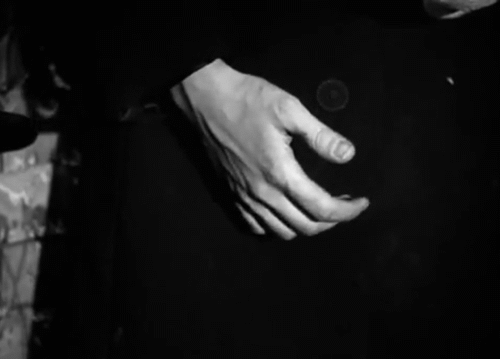How to know what you want | pt. 4
Releasing your desires from the grip of fear and shame
Happy Monday! Today’s newsletter wraps up our four-part deep dive into desire with a guide to unburdening them from fear and shame. I still have more to say on this subject, but I’m shelving those thoughts for a future book, because as of this week I’m officially bored and desire (ha!) to write about something else. Literally anything from the twenty drafts-deep pile of unexplored material vying for my attention. I’ll probably start on the big life update I’ve been promising next. Get ready for that, cause there’s a lot.
In the meantime, if you missed parts 1-3, you can read them here:
Otherwise, scroll on to read part 4…
Releasing Desire from the Grip of Fear and Shame

Why Do Fear and Shame Grip So Tight?
Before you can release your desires from the grip of fear and shame, you first need to understand what they’re actually for. Fear and shame aren’t random, irrational emotional hurdles designed to complicate your life—far from it. They’re protective strategies crafted by your unconscious mind to keep you within the bounds of what it perceives as “safe,” shielding you from potential threats to your core needs for love, safety, and belonging.
To your unconscious mind, "safe" means anything you’ve survived before. But surviving isn’t the same as thriving, and what once felt “safe” to your system is often the very thing holding you back from realizing your most ambitious visions today.
For example, if you grew up in a chaotic household, you might have learned to shrink yourself—staying quiet, agreeable, and unobtrusive—to dodge conflict and avoid rejection from the adults you depended on. That strategy made perfect sense when you were a child with limited power. But now, as an adult, it can prevent you from tapping into the agency and resources you need to stand up for yourself and chase your dreams.
Because you survived then, your unconscious mind decided that both the context (chaotic household) and the adaptation (shrinking to avoid attention) were “safe.” Meaning, unless you actively seek out (or create) evidence that peaceful households, and standing up for yourself, can also lead to safety, you’ll unconsciously, and repeatedly, gravitate toward situations that echo your upbringing, further crystallizing your outdated beliefs about yourself and the world.
This quirk of our evolutionary neurobiology worked well when the behaviors and environments that kept us safe remained relatively stable throughout our lives—as they did for most of human history. But that’s not the world we live in anymore. For one, our lifespans have nearly doubled. And on top of that, the pace of social, cultural, and technological change has skyrocketed in the past century.
Without the psycho-emotional agility to adapt your behaviors to your current reality, the same patterns that once protected you can gradually begin to hold you back. Like anything worth doing, cultivating this agility isn’t necessarily easy, but it’s absolutely doable—and working with a trained professional is essential to avoid succumbing to the blind-spots that slow and derail progress.
Somatic depth coaching (the work I offer) is uniquely suited for this, because it engages both your unconscious mind (your operating system—the "depth" part) and your nervous system (your hardware—the "somatic" part). Together, we uncover and transform deeply rooted patterns, helping you move beyond outdated notions of what’s “safe.”
While I can’t take you as deep in this newsletter as I can in a private or group session, my goal is to give you a meaningful starting point. Read on for three practical processes to help you demystify your desires, reclaim your agency, and move toward the life you’re ready to create.
1. Shift from “Should” to “Want”
Obligation is the fastest way to suffocate desire. The moment you hear yourself saying, “I should do this,” your body probably reacts with a sigh, a slump, or maybe even a full-body “ugh.” This is your first clue that you’ve stumbled into the land of “shoulds,” where societal expectations, cultural conditioning, or someone else’s voice in your head starts dictating your actions.
To break free, try replacing “should” with “want” and notice how your body responds. It’s a simple swap, but it shifts the question from “What do I owe?” to “What do I genuinely desire?”
Here’s the trick: authentic desires tend to create sensations of upward expansion, grounding, or relaxation. They might feel like a breath of fresh air, a sense of possibility, or an internal “Yes, please.” In contrast, inauthentic desires—those rooted in “shoulds”—often show up as tension, contraction, heaviness, or even emptiness.
Now, obviously there are nuances to this. The path to the things we desire in life is frequently littered with tasks we’d prefer to skip. The way around this is to consider our desired outcomes.
Let’s try this with an example:
Maybe you’ve been telling yourself, “I should apply for artist residencies.” When you swap “should” for “want,” your body might reveal that, actually, the application process feels draining and uninspiring. But when you imagine successfully incubating a new work, there’s a sense of excitement or possibility. That’s your real desire: creating space to bring your art to life.
Or take something mundane, like dishes. “I should do the dishes” might feel like an obligation weighing on your shoulders. But “I want a clean kitchen” taps into a desire for ease and order. While scrubbing plates may not feel particularly expansive, the sensation of walking into a clean, functional space might.
Once you’ve pinpointed the expansive outcome, here’s where the magic happens: you can design an equally expansive process to get there. How can you transform the way you approach the task so it feels less like a chore and more like an act of alignment?
For instance:
Turn on your favorite music or podcast while washing dishes, and let the rhythm energize you.
Set up a cozy workspace or invite a friend to co-work before diving into that new creative project, making the process as nurturing as the outcome.
The goal isn’t to fake joy for tasks you don’t love—it’s to connect with the deeper sensation of why they matter. By anchoring into the felt experience of authentic desire, even the most mundane tasks can become part of your path to fulfillment, rather than a detour into drudgery.

2. Uncover the Hungers Beneath Your Cravings
Fear and shame often show up as internal “moral police,” keeping you hyper-aware of how your actions might be judged or rejected by others. They’re like overzealous guards patrolling the edges of belonging, determined to keep you safely inside the tribe, even if that means silencing your true desires. On the flip side, they can also take on the role of “calls to reality,” attempting to shield you from the sting of disappointment. In this form, they whisper warnings like, “Don’t get your hopes up—you know how this ends,” or “It’s safer not to try at all.”
While these voices can feel like barriers, their intentions are protective. They’re trying to keep you safe from failure, rejection, and disappointment. But left unchecked, they often overstep, acting more like jailers than allies, locking you into patterns of self-doubt and hesitation.
The following exercise helps you navigate this deadlock by:
Allowing you to “try on” your desires without the pressure of commitment.
Uncovering the true essence of your desires, while easing your attachment to potentially inefficient strategies for fulfilling them.






